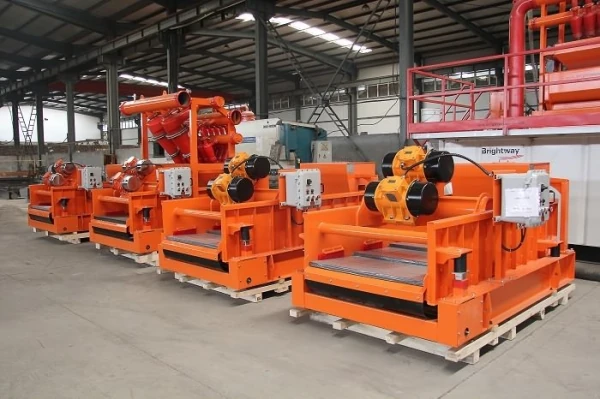This phenomenon is primarily related to factors such as the high solids content in the drilling fluid, high mud viscosity, and dispersed drill cuttings. It is also related to the inherent characteristics of the shaker screen, such as low vibration force, high mesh count, and small screen area. It is also significantly affected by the direction and location of the shaker screen's inlet during on-site installation. This can be analyzed from the following points.
First, the selected mesh count is inappropriate. Each shaker screen has a throughput of 50 L/s. This is because the throughput test conditions are based on national standards: a 60-mesh screen is used, and the test is conducted in a weighted mud with a specific gravity of 1.8. The mud viscosity is determined by the presence of river sand of varying particle sizes. Rapid drilling into the surface layer generates a large amount of solids, which occupy the effective screen area. Therefore, fine mesh shaker screens cannot be used in shallow well sections. Therefore, a larger mesh should be used in the initial drilling phase, and finer mesh should be gradually adopted as drilling depth increases.

Second, formation and mud conditions affect throughput. Because the chemicals added to the drilling fluid haven't fully dissolved, they stick to the screen, causing severe slurry leakage. Wait until the chemicals are fully dissolved before use, or use a screen with larger mesh sizes. Alternatively, when drilling into loose sandstone or quicksand layers, sand particles can easily get stuck in the screen mesh, causing clogging. Therefore, try experimenting with several screens of different mesh sizes to reduce clogging.
Third, check the motor's rotation direction. First, remove the vibrator shield and verify that the eccentrics of both motors are rotating outward. Secondly, if the rotation direction is incorrect, swap any two phases of the power supply to the electrical control box. Error method 1 (both motors rotating inward) still removes drill cuttings, but at a slower speed. Error method 2 (both motors rotating in the same direction) produces very little vibration force, resulting in virtually no sand removal or mud treatment.
Fourth, check the vibration amplitude of the shaker screen. A larger amplitude generally results in a higher throughput; the vibration force is factory-set to 90%. If slurry leakage occurs, align the inner and outer eccentric blocks to achieve 100% vibration force. (This will only increase the slurry processing capacity by approximately 15%.)
Fifth, check whether the liquid flow is properly distributed on the screen frame. On shaker screens with hook-edge screens, the screen surface on both sides is lower than in the center, which can easily cause mud to flow to the sides and escape. Ensure that the mud enters the screen frame from the center. In this case, there are two options: one is to adjust the front spring seat to appropriately raise the angle of the front of the screen box; the other is to adjust the position of the tilt plate on the extension trough to control the liquid flow distribution.

